本文介绍知识蒸馏技术及基于PaddleNLP加载CPM-Distill模型实现文本生成。知识蒸馏是模型压缩方法,以“教师-学生网络”思想,让简单模型拟合复杂模型输出,效果优于从头训练。CPM-Distill由GPT-2 Large蒸馏得到,文中还给出安装依赖、加载模型、解码方法及文本生成示例。
☞☞☞AI 智能聊天, 问答助手, AI 智能搜索, 免费无限量使用 DeepSeek R1 模型☜☜☜
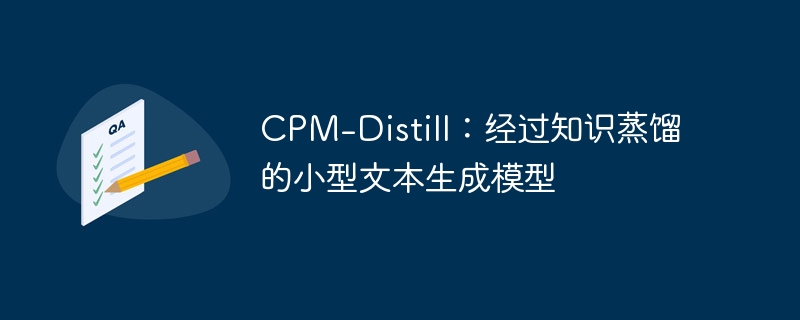
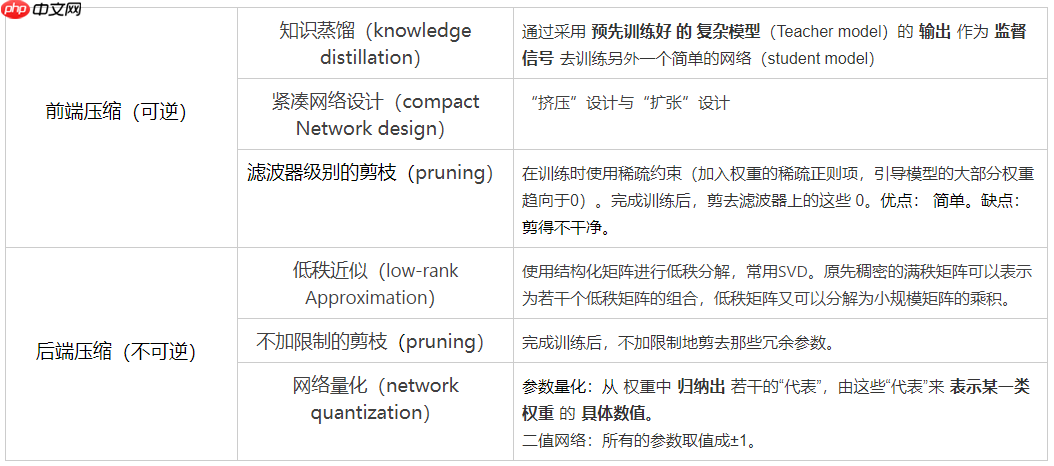
知识蒸馏是一种模型压缩方法,是一种基于“教师-学生网络思想”的训练方法。
由 Hinton 在 2015 年 Distilling the Knowledge in a Neural Network 的论文首次提出了知识蒸馏的并尝试在 CV 领域中使用,旨在把大模型学到的知识灌输到小模型中,以达到缩小模型的目标,示意图如下:
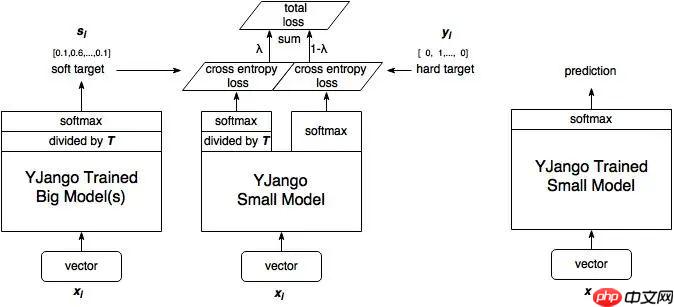
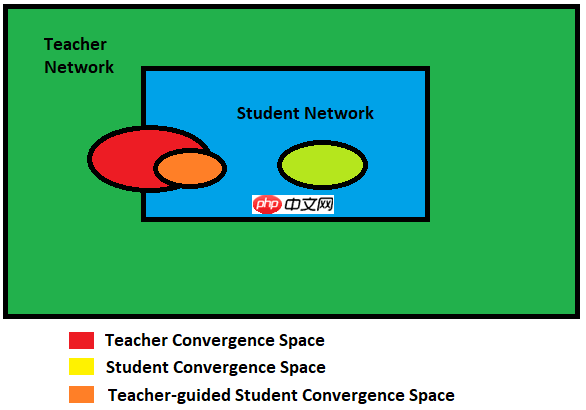
teacher_model = GPTModel(
vocab_size=30000,
hidden_size=2560,
num_hidden_layers=32,
num_attention_heads=32,
intermediate_size=10240,
hidden_act="gelu",
hidden_dropout_prob=0.1,
attention_probs_dropout_prob=0.1,
max_position_embeddings=1024,
type_vocab_size=1,
initializer_range=0.02,
pad_token_id=0,
topo=None)teacher_model = GPTModel(
vocab_size=30000,
hidden_size=768,
num_hidden_layers=12,
num_attention_heads=12,
intermediate_size=3072,
hidden_act="gelu",
hidden_dropout_prob=0.1,
attention_probs_dropout_prob=0.1,
max_position_embeddings=1024,
type_vocab_size=1,
initializer_range=0.02,
pad_token_id=0,
topo=None)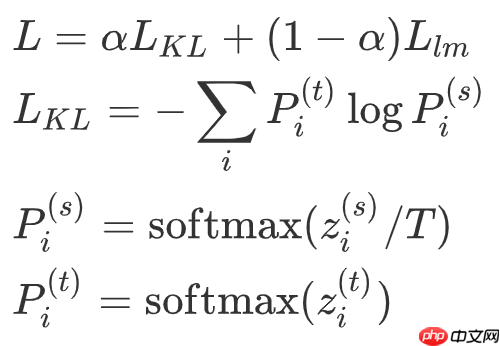
其中 Llm 为 GPT-2 原始的 language modeling loss。
!pip install paddlenlp==2.0.1 sentencepiece==0.1.92
import paddlefrom paddlenlp.transformers import GPTModel, GPTForPretraining, GPTChineseTokenizer# tokenizer 与 CPM-LM 模型一致tokenizer = GPTChineseTokenizer.from_pretrained('gpt-cpm-large-cn')# 实例化 GPT2-small 模型gpt = GPTModel(
vocab_size=30000,
hidden_size=768,
num_hidden_layers=12,
num_attention_heads=12,
intermediate_size=3072,
hidden_act="gelu",
hidden_dropout_prob=0.1,
attention_probs_dropout_prob=0.1,
max_position_embeddings=1024,
type_vocab_size=1,
initializer_range=0.02,
pad_token_id=0,
topo=None)# 加载预训练模型参数params = paddle.load('data/data92160/gpt-cpm-small-cn-distill.pdparams')# 设置参数gpt.set_dict(params)# 使用 GPTForPretraining 向模型中添加输出层model = GPTForPretraining(gpt)# 将模型设置为评估模式model.eval()[2021-05-28 19:38:04,469] [ INFO] - Found /home/aistudio/.paddlenlp/models/gpt-cpm-large-cn/gpt-cpm-cn-sentencepiece.model
import paddleimport numpy as np# Greedy Searchdef greedy_search(text, max_len=32, end_word=None):
# # 终止标志
if end_word is not None:
stop_id = tokenizer.encode(end_word)['input_ids']
length = len(stop_id) else:
stop_id = [tokenizer.eod_token_id]
length = len(stop_id)
# 初始预测
ids = tokenizer.encode(text)['input_ids']
input_id = paddle.to_tensor(np.array(ids).reshape(1, -1).astype('int64'))
output, cached_kvs = model(input_id, use_cache=True)
next_token = int(np.argmax(output[0, -1].numpy()))
ids.append(next_token) # 使用缓存进行继续预测
for i in range(max_len-1):
input_id = paddle.to_tensor(np.array([next_token]).reshape(1, -1).astype('int64'))
output, cached_kvs = model(input_id, use_cache=True, cache=cached_kvs)
next_token = int(np.argmax(output[0, -1].numpy()))
ids.append(next_token) # 根据终止标志停止预测
if ids[-length:]==stop_id: if end_word is None:
ids = ids[:-1] break
return tokenizer.convert_ids_to_string(ids)import paddleimport numpy as np# top_k and top_p filteringdef top_k_top_p_filtering(logits, top_k=0, top_p=1.0, filter_value=-float('Inf')):
""" Filter a distribution of logits using top-k and/or nucleus (top-p) filtering
Args:
logits: logits distribution shape (vocabulary size)
top_k > 0: keep only top k tokens with highest probability (top-k filtering).
top_p > 0.0: keep the top tokens with cumulative probability >= top_p (nucleus filtering).
Nucleus filtering is described in Holtzman et al. (http://arxiv.org/abs/1904.09751)
From: https://gist.github.com/thomwolf/1a5a29f6962089e871b94cbd09daf317
"""
top_k = min(top_k, logits.shape[-1]) # Safety check
logits_np = logits.numpy() if top_k > 0: # Remove all tokens with a probability less than the last token of the top-k
indices_to_remove = logits_np < np.sort(logits_np)[-top_k]
logits_np[indices_to_remove] = filter_value if top_p < 1.0:
sorted_logits = paddle.sort(logits, descending=True)
sorted_indices = paddle.argsort(logits, descending=True).numpy()
cumulative_probs = paddle.cumsum(paddle.nn.functional.softmax(sorted_logits, axis=-1), axis=-1).numpy() # Remove tokens with cumulative probability above the threshold
sorted_indices_to_remove = cumulative_probs > top_p # Shift the indices to the right to keep also the first token above the threshold
sorted_indices_to_remove[..., 1:] = sorted_indices_to_remove[..., :-1]
sorted_indices_to_remove[..., 0] = 0
indices_to_remove = sorted_indices[sorted_indices_to_remove]
logits_np[indices_to_remove] = filter_value return paddle.to_tensor(logits_np)# Nucleus Sampledef nucleus_sample(text, max_len=32, end_word=None, repitition_penalty=1.0, temperature=1.0, top_k=0, top_p=1.0):
# 终止标志
if end_word is not None:
stop_id = tokenizer.encode(end_word)['input_ids']
length = len(stop_id) else:
stop_id = [tokenizer.eod_token_id]
length = len(stop_id) # 初始预测
ids = tokenizer.encode(text)['input_ids']
input_id = paddle.to_tensor(np.array(ids).reshape(1, -1).astype('int64'))
output, cached_kvs = model(input_id, use_cache=True)
next_token_logits = output[0, -1, :] for id in set(ids):
next_token_logits[id] /= repitition_penalty
next_token_logits = next_token_logits / temperature
filtered_logits = top_k_top_p_filtering(next_token_logits, top_k=top_k, top_p=top_p)
next_token = paddle.multinomial(paddle.nn.functional.softmax(filtered_logits, axis=-1), num_samples=1).numpy()
ids += [int(next_token)] # 使用缓存进行继续预测
for i in range(max_len-1):
input_id = paddle.to_tensor(np.array([next_token]).reshape(1, -1).astype('int64'))
output, cached_kvs = model(input_id, use_cache=True, cache=cached_kvs)
next_token_logits = output[0, -1, :] for id in set(ids):
next_token_logits[id] /= repitition_penalty
next_token_logits = next_token_logits / temperature
filtered_logits = top_k_top_p_filtering(next_token_logits, top_k=top_k, top_p=top_p)
next_token = paddle.multinomial(paddle.nn.functional.softmax(filtered_logits, axis=-1), num_samples=1).numpy()
ids += [int(next_token)] # 根据终止标志停止预测
if ids[-length:]==stop_id: if end_word is None:
ids = ids[:-1] break
return tokenizer.convert_ids_to_string(ids)# 输入文本inputs = input('请输入文本:')print(inputs)# 使用 Nucleus Sample 进行文本生成outputs = greedy_search(
inputs, # 输入文本
max_len=128, # 最大生成文本的长度
end_word=None)# 打印输出print(outputs)请输入文本:请在此处输入你的姓名 请在此处输入你的姓名,然后点击“确定”,就可以开始游戏了。 游戏目标:在限定时间内,成功地把所有的牌都通通打完。
# 输入文本inputs = input('请输入文本:')print(inputs)for x in range(5): # 使用 Nucleus Sample 进行文本生成
outputs = nucleus_sample(
inputs, # 输入文本
max_len=128, # 最大生成文本的长度
end_word='。', # 终止符号
repitition_penalty=1.0, # 重复度抑制
temperature=1.0, # 温度
top_k=3000, # 取前k个最大输出再进行采样
top_p=0.9 # 抑制概率低于top_p的输出再进行采样
) # 打印输出
print(outputs)请输入文本:请在此处输入你的姓名 请在此处输入你的姓名、学校、专业及学科,并在社交媒体上公布你的个人简介。 请在此处输入你的姓名或者电话,对方会及时通知你。 请在此处输入你的姓名、民族及籍贯信息,当您找到 CADULI 的联系方式后,我们会按您所选择的申请中心,以电子邮件的形式向您发送邮件。 请在此处输入你的姓名和电话号码,由资深会所接待员进行介绍,因为此处有不少中国的大老板,英文能看。 请在此处输入你的姓名、联系电话、银行卡号和手机号。
以上就是CPM-Distill:经过知识蒸馏的小型文本生成模型的详细内容,更多请关注php中文网其它相关文章!

每个人都需要一台速度更快、更稳定的 PC。随着时间的推移,垃圾文件、旧注册表数据和不必要的后台进程会占用资源并降低性能。幸运的是,许多工具可以让 Windows 保持平稳运行。

Copyright 2014-2025 https://www.php.cn/ All Rights Reserved | php.cn | 湘ICP备2023035733号